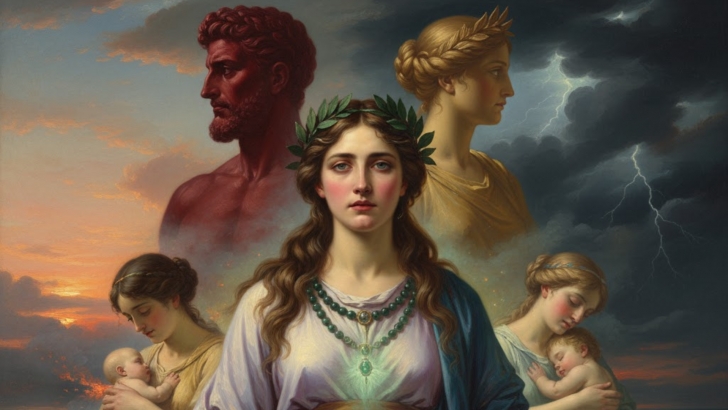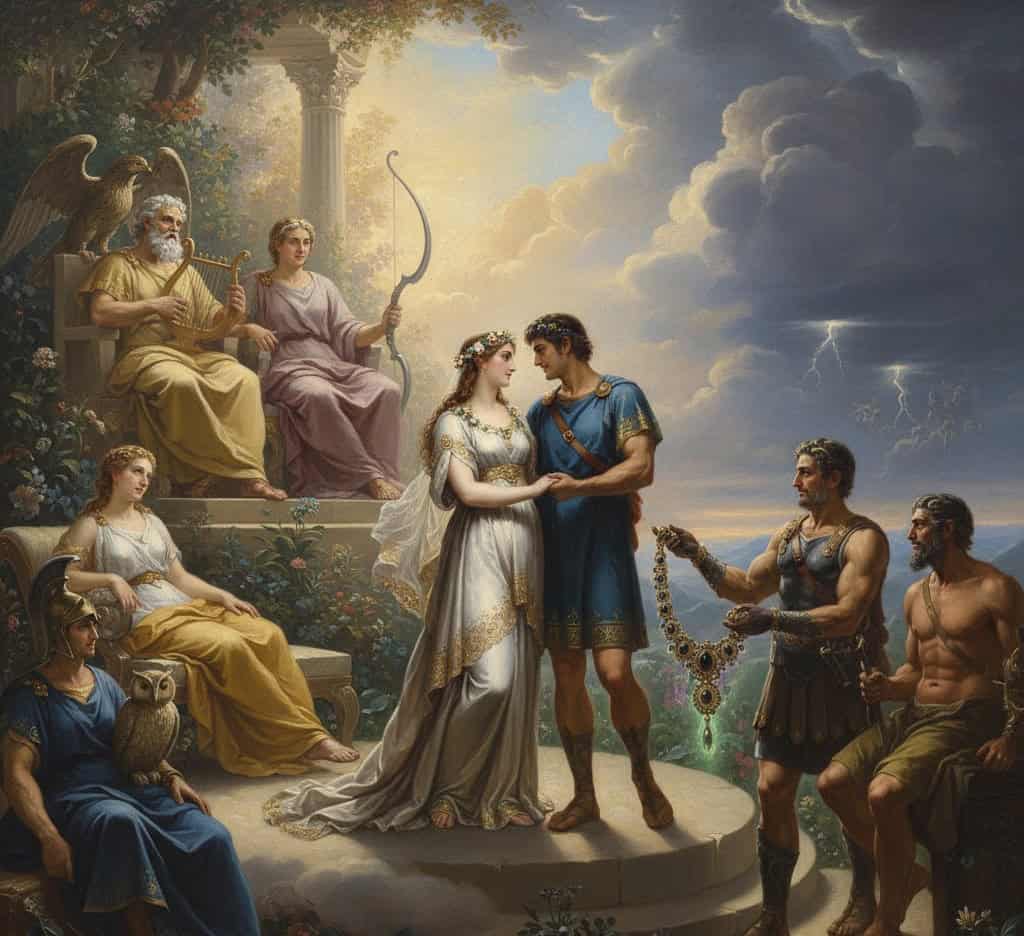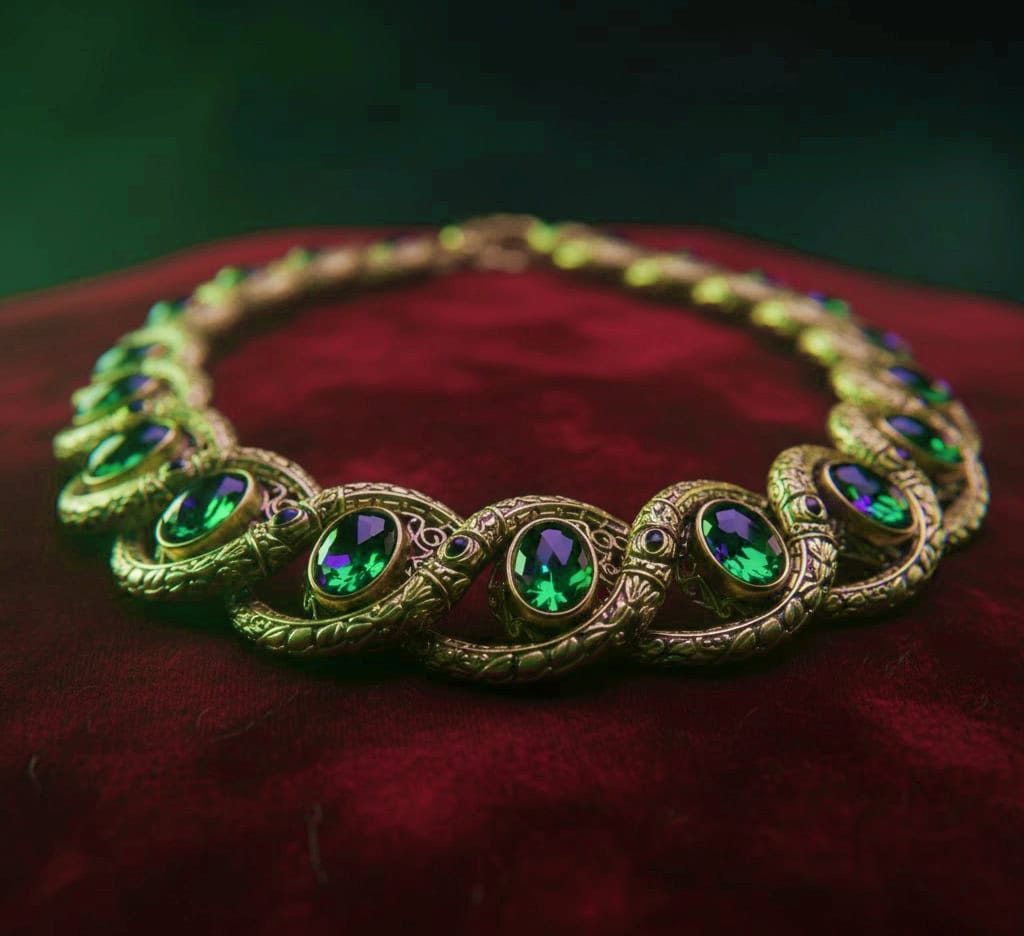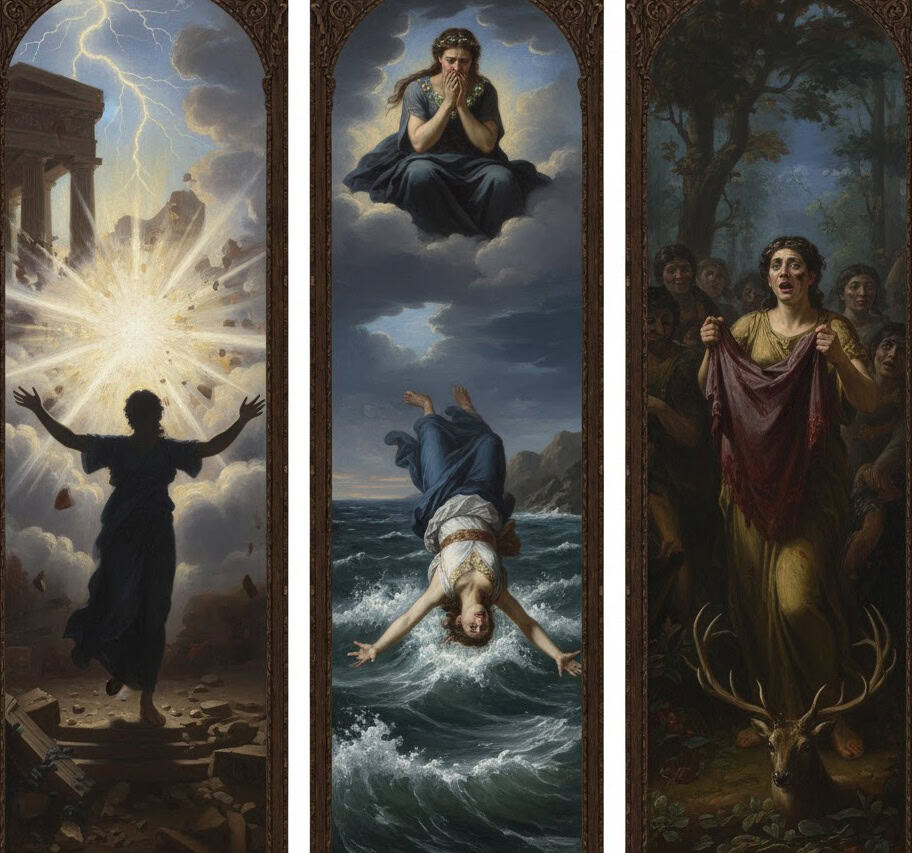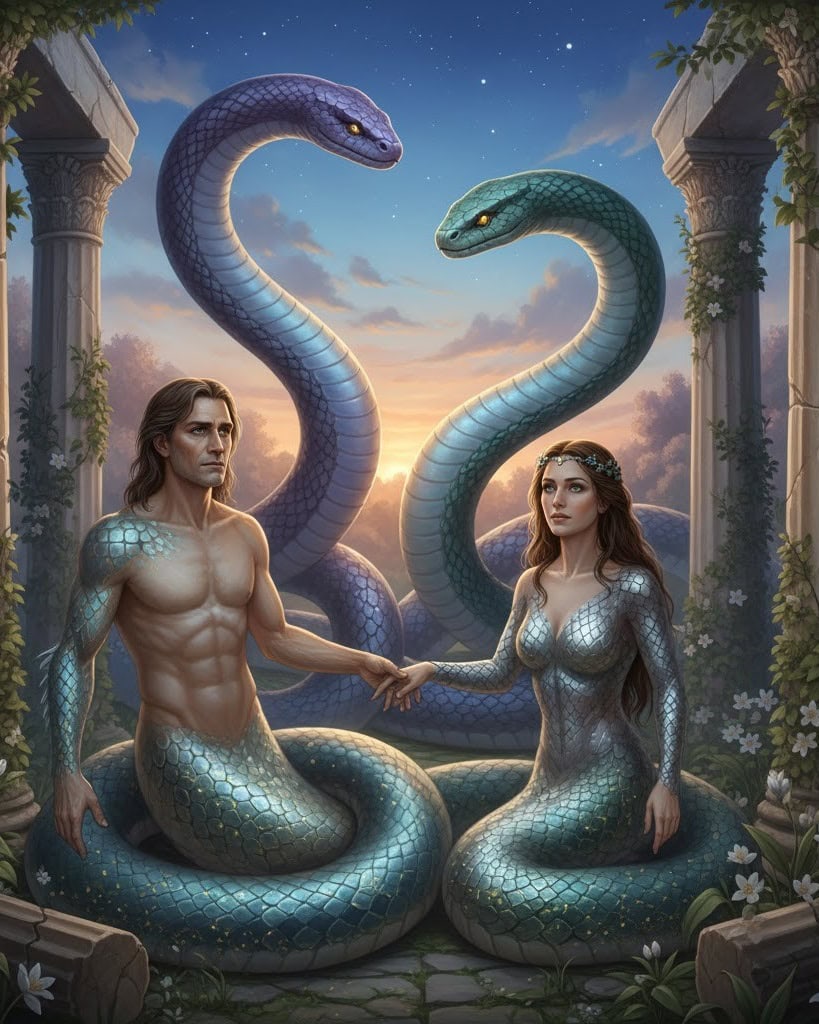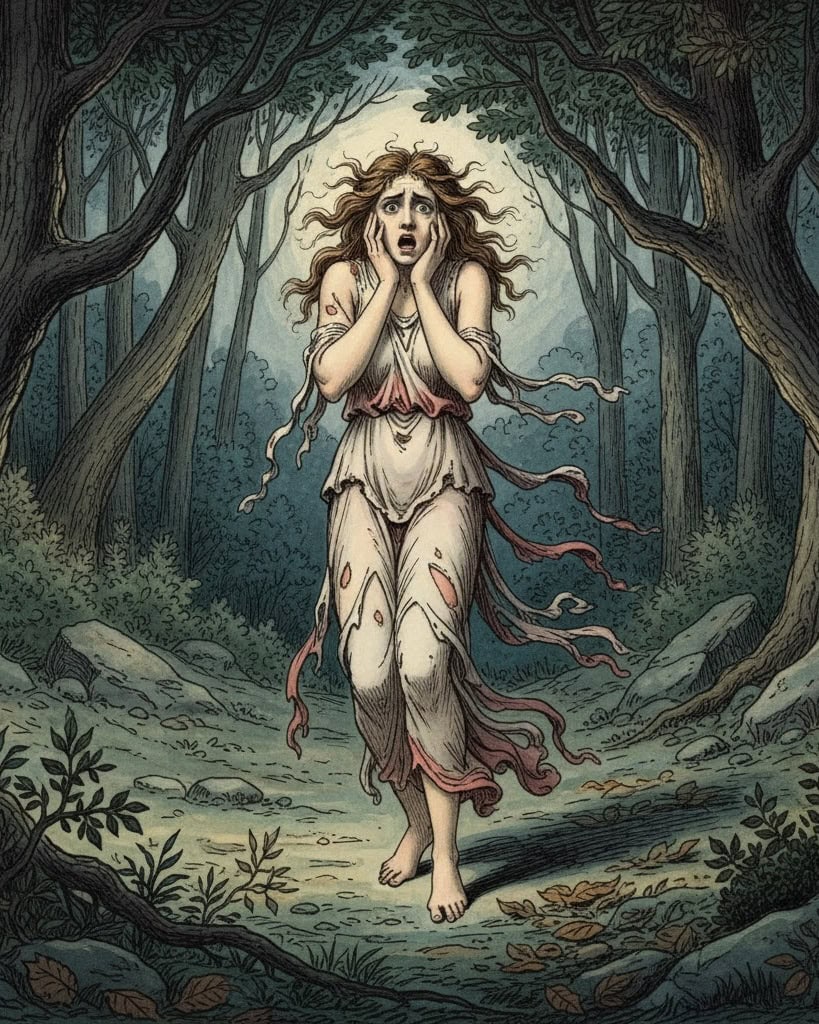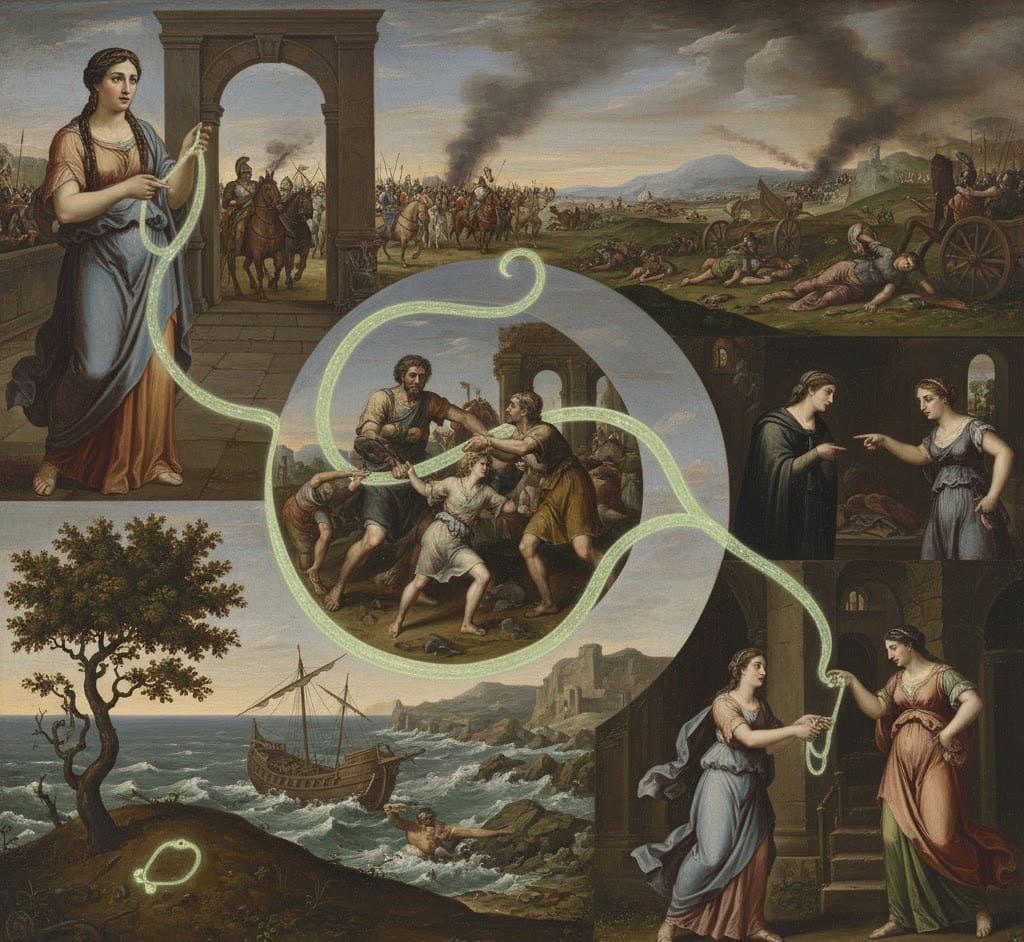In Greek mythology, Harmonia was the goddess of harmony, born from the union of Ares, the god of war, and Aphrodite, the goddess of love.
Her very existence symbolized the meeting of peace and conflict, of passion and calm. Yet despite her name, Harmonia’s story and her descendants were marked by endless misfortune.
Her myths remind us that even love blessed by the gods can carry a shadow, and that beauty and balance often come with a hidden cost.
1. The Marriage of Harmonia and Cadmus
Harmonia’s marriage to Cadmus, the founder of Thebes, was one of the most celebrated unions between a mortal and a goddess.
The gods themselves attended the wedding, showering the couple with gifts and music. But their happiness would not last.
Among the divine presents was a beautiful necklace forged by Hephaestus. It glittered like starlight and promised good fortune, yet beneath its glow, a curse waited to awaken.
The perfect wedding of love and peace soon became the seed of endless sorrow.
2. The Necklace of Harmonia
The cursed necklace was said to grant eternal youth and charm, but it also bound its wearer to a destiny of grief.
No one knows whether the curse came from Hephaestus, angry at Aphrodite’s affair, or from the jealous gods who envied Harmonia’s happiness.
Either way, the jewel brought ruin wherever it went. Harmonia wore it proudly, unaware of its power, and in time, it became the most infamous object in Theban lore.
Her daughters and granddaughters would inherit it, each facing heartbreak and death. What began as a wedding gift turned into a chain of suffering that could never be broken.
3. The Curse on Harmonia’s Children
The children of Cadmus and Harmonia inherited both their parents’ divine beauty and their curse. Zeus loved their daughter Semele, but her desire to see his true form led to her death in a burst of lightning.
Another daughter, Ino, went mad and leapt into the sea, while Agave, driven to frenzy, killed her own son Pentheus.
Each tragedy felt like a ripple from the original curse, spreading through the family tree.
Harmonia, the goddess of balance, could only watch as chaos consumed her children. Her name promised peace, but her bloodline carried only sorrow.
4. The Transformation of Cadmus and Harmonia
After years of watching their descendants suffer, Cadmus and Harmonia could bear no more grief. They left Thebes behind and wandered across foreign lands, searching for rest.
In Illyria, they ruled for a time and brought wisdom to the people, but the curse still lingered.
Tired of human pain, Cadmus prayed to the gods to be transformed, and Harmonia asked to share his fate.
The gods granted their wish, turning them both into serpents. Some say this was punishment, others say it was peace.
In serpent form, they slithered side by side, finally free from the burden of their cursed love.
5. The Madness of Agave
Agave’s story stands out as one of the most chilling results of Harmonia’s curse. When Dionysus returned to Thebes, Agave (Harmonia’s daughter) refused to honor him as a god.
To punish her arrogance, Dionysus drove her and the women of Thebes into a wild frenzy. Under the god’s influence, Agave mistook her own son, Pentheus, for a lion and tore him apart with her bare hands.
When she came to her senses, she was horrified by what she had done. The madness of Agave showed how divine power could twist human love into horror.
6. The Endless Journey of the Necklace
The Necklace of Harmonia did not disappear after her death. It continued to bring destruction to everyone who possessed it.
Eriphyle accepted the necklace as a bribe to send her husband, Amphiaraus, to war. When he died, her son killed her in revenge.
Later, it appeared again in the myth of Polynices and Argia, where it caused even more conflict.
The necklace was said to gleam with otherworldly beauty, but those who saw it were doomed to lose everything they loved.
The gods had turned a symbol of beauty into a reminder that nothing given by them came without a price.
7. The Legacy of Harmonia
Though centuries have passed, Harmonia’s story remains one of the most powerful in Greek mythology.
She was born from love and war, destined to embody balance, yet trapped in the endless struggle between them.
Her life and her family’s misfortunes showed that harmony is fragile and that even divine love can carry destruction within it.
The cursed necklace, the madness of her daughters, and her final transformation into a serpent all reflect the same truth: balance is never eternal.
Harmonia’s name may mean peace, but her story whispers of the chaos that even gods cannot control.

私は生まれたときから、常に神との強いつながりを感じていた。作家として、また指導者として、私の使命は、人々が最も暗い時代に愛と幸福と内なる強さを見つけるのを助けることである。

